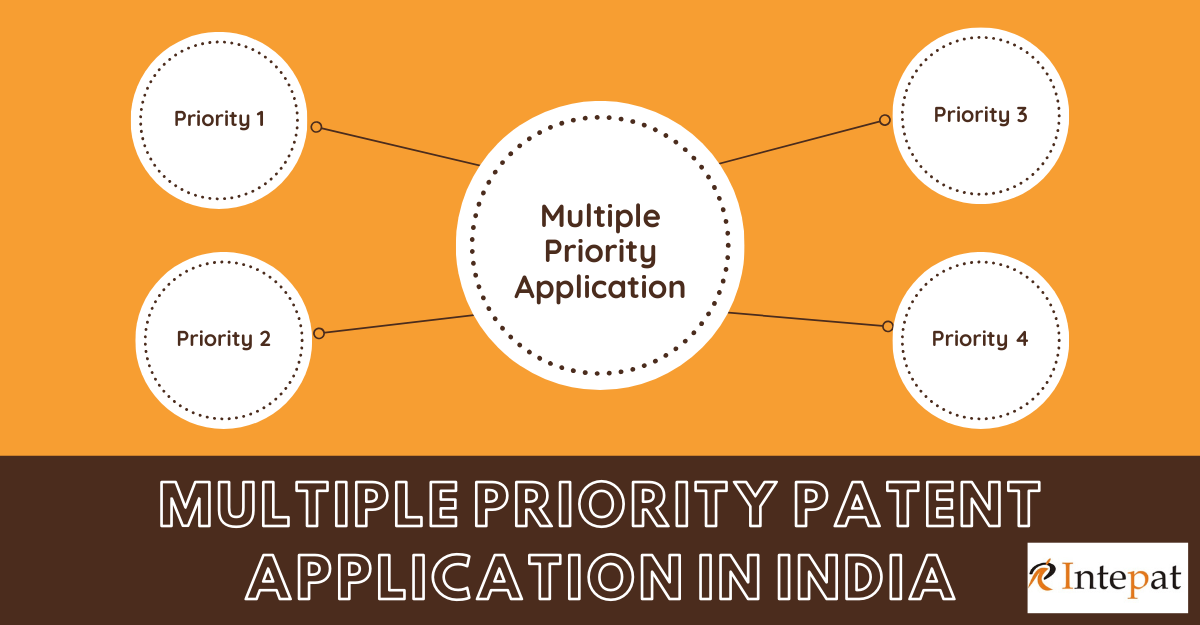Section 137 of the Indian Patents Act, 1970, provides for the patent application of multiple priorities. To understand what is multiple priority patent application, it is essential to first look into what are priority rights, what is a priority date, and how obtaining the earliest priority date is critical for the patentability of some inventions.
Prior Art
Prior art is considered as any evidence that a person’s invention was already known. It implies that it was available in public (partly or in whole) before the application filed for the patent. Prior art is one of the primary reasons why patent applications get rejected as the condition of novelty dwindles on this premise.
Priority Rights
Article 4 of the Paris Convention for the Protection of Industrial Property gives insights into the right of priority. Art. 4A states that a person for a patent shall enjoy the right of priority for a particular period of time.
A right of priority gives protection to a person’s patent in all member countries after applying. His application will be considered based on the first application while assessing specific aspects of granting a patent. This priority right is necessary so that the earlier application is not regarded as prior art against the same person’s patent application. Incase others are applying for the same subject matter after the priority date, the applicant will enjoy the priority privilege.
Priority Date
An applicant can claim the priority of an earlier application if matters disclosed in the earlier support the later application. The priority claim must be by the applicant of the previous application. The priority date becomes vital in this regard because the invention is state of the art on that date. Thus, this date is considered while judging the invention for novelty.
The date on which the applicant filed the first patent application will be considered the priority date. Further, if the applications are filed in different countries, the parent application’s date can be regarded as the priority date.
Multiple Priorities
Subsequent applications can either claim priority from a single earlier application or more than one such application. In cases of claiming multiple priorities, the applicant may claim priority from either the same jurisdiction or various jurisdictions.
Section 137 provided for multiple priorities where two or more applications applied for patents. These inventions for which the applications applied should relate in such a manner that it would constitute one invention. Once these conditions are fulfilled, the applicant within 12 months, from which the earliest application filing date can apply for a multiple priority application.
The basic rule of priority applies to multiple priorities, as well the earlier invention must support the complete specification for which the application may be filed. The priority date would be the date upon which the matter was first disclosed i.e., earliest filing date.
A matter would be considered disclosed in a prior application under the following circumstances-
– If it was disclosed or claimed in the primary application, the basic application is the earliest application, which was filed of the subject matter.
– If it was disclosed in any documents submitted by the applicant for protection of the patent, at the same time as the application.
However, for such a document to be accepted, a copy of the same must be filed with the convention application. Or it can be submitted within such period as may be prescribed after the filing of that application.
Fees for Multiple Priorities
On an application for a patent under Sections 7, 54, or 135, a natural person/startup would be required to pay multiple of Rs 1600 in case of every multiple priorities. A small entity, alone or with a natural person(s) and/or a startup, would be required to pay multiple Rs 4000 in case of each priority. Others, either alone or with a natural person(s) and/or startup and/or a small entity would be required to pay multiple of Rs 8000 in case of each priority. These, however, are the costs applicable for e-filing. In order to access the entire schedule of patent fees, one can access details here.
Example of claiming multiple priorities.
An applicant files an application in India and claims two subject matters X & Y. Matter X has been disclosed in a European application, and matter Y has been disclosed in a French application. The application filed in India is within the preceding 12 months of X & Y.
Under these conditions, the priority dates of both X, Y applications are applicable. Matter X will be evaluated, taking into consideration the priority date for the European application. Matter Y will be evaluated, taking into account the priority date for the French application.
Conclusion
Claiming multiple priorities gives a significant benefit to the applicant, considering the priority dates of the multiple priorities, which play an essential role in the grant of a patent. It ensures that disclosure in earlier applications/inventions does not hamper the patentability of the final invention or subsequent registrations in other jurisdictions. This priority option, in turn, recovers the Research & Development cost that is incurred by the inventor, thereby incentivizing inventions.




